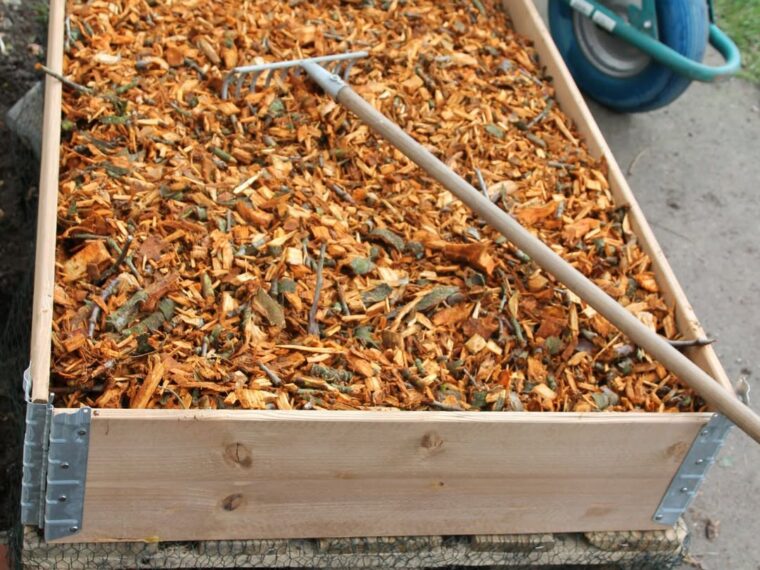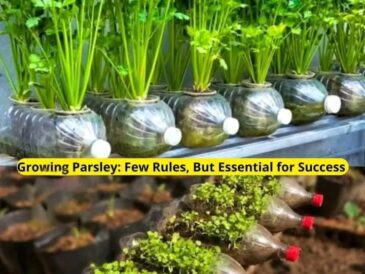Types of Fertilizers:
- Slow-Release Organic Fertilizers: These provide a steady supply of nutrients over time.
- Balanced Fertilizers (10-10-10): Ideal for general-purpose gardening.
- Specialized Fertilizers: Choose fertilizers tailored to your plants, such as tomato or vegetable fertilizers.
Tip: Follow the recommended application rates to avoid over-fertilizing, which can harm plants.
5. Mulch to Retain Moisture and Suppress Weeds
Mulching helps conserve soil moisture, suppresses weeds, and adds organic matter as it breaks down.
Effective Mulch Materials:
- Straw: Excellent for vegetable gardens.
- Wood Chips or Bark: Ideal for perennial plants and pathways.
- Grass Clippings: Use in thin layers to prevent matting.
- Shredded Leaves: A cost-effective and nutrient-rich option.
Apply a 2-3 inch layer of mulch around plants, keeping it a few inches away from the stems to prevent rot.
6. Rotate Crops to Prevent Soil Depletion
Crop rotation prevents the depletion of specific nutrients and reduces the risk of pests and diseases.
How to Rotate Crops in Raised Beds:
- Group plants into families (e.g., nightshades, brassicas, legumes).
- Avoid planting the same family in the same spot two years in a row.
- Follow a rotation plan: leafy crops → fruiting crops → root crops → legumes.
Example Rotation: Tomatoes (year 1) → Lettuce (year 2) → Carrots (year 3) → Beans (year 4).
7. Introduce Cover Crops for Soil Healt
Cover crops, also known as green manure, are plants grown specifically to improve soil health. They add organic matter, prevent erosion, and fix nitrogen in the soil.
Best Cover Crops for Raised Beds:
- Legumes (e.g., clover, peas): Fix nitrogen in the soil.
- Grasses (e.g., rye, oats): Build organic matter and prevent erosion.
- Brassicas (e.g., mustard): Suppress weeds and break up compacted soil.
Sow cover crops at the end of the growing season and till them into the soil before planting in spring.
Bonus Tips for Maintaining Healthy Raised Beds
- Test Soil Regularly: Use a soil test kit to check pH and nutrient levels, adjusting as needed.
- Add Worms: Earthworms aerate the soil and break down organic matter, enriching the soil.
- Water Wisely: Use drip irrigation or soaker hoses to water deeply and efficiently.
- Monitor for Pests and Diseases: Inspect plants regularly and take action at the first signs of trouble.
Frequently Asked Questions (FAQs)
1. How often should I rejuvenate my raised beds?
Raised beds should be replenished and rejuvenated at least once a year, typically in early spring or late fall.
2. Can I reuse the same soil in my raised beds?
Yes, you can reuse soil, but it’s essential to refresh it with organic matter and nutrients each season.
3. What is the best organic matter for raised beds?
Compost is the best organic matter as it enriches the soil with nutrients and beneficial microbes.
4. How deep should the soil be in a raised bed?
The soil should be at least 12 inches deep to allow for proper root growth.
5. Do I need to rotate crops in raised beds?
Yes, crop rotation is essential to prevent nutrient depletion and reduce pest and disease problems.
6. How can I keep my raised bed soil from drying out?
Mulching and using drip irrigation or soaker hoses can help retain soil moisture.
Conclusion
Rejuvenating and replenishing your raised beds is essential for maintaining healthy, productive plants. By following these seven methods—removing old plants, aerating soil, adding organic matter, fertilizing, mulching, rotating crops, and introducing cover crops—you’ll create a thriving environment for your garden. With proper care, your raised beds will continue to yield bountiful harvests season after season.




